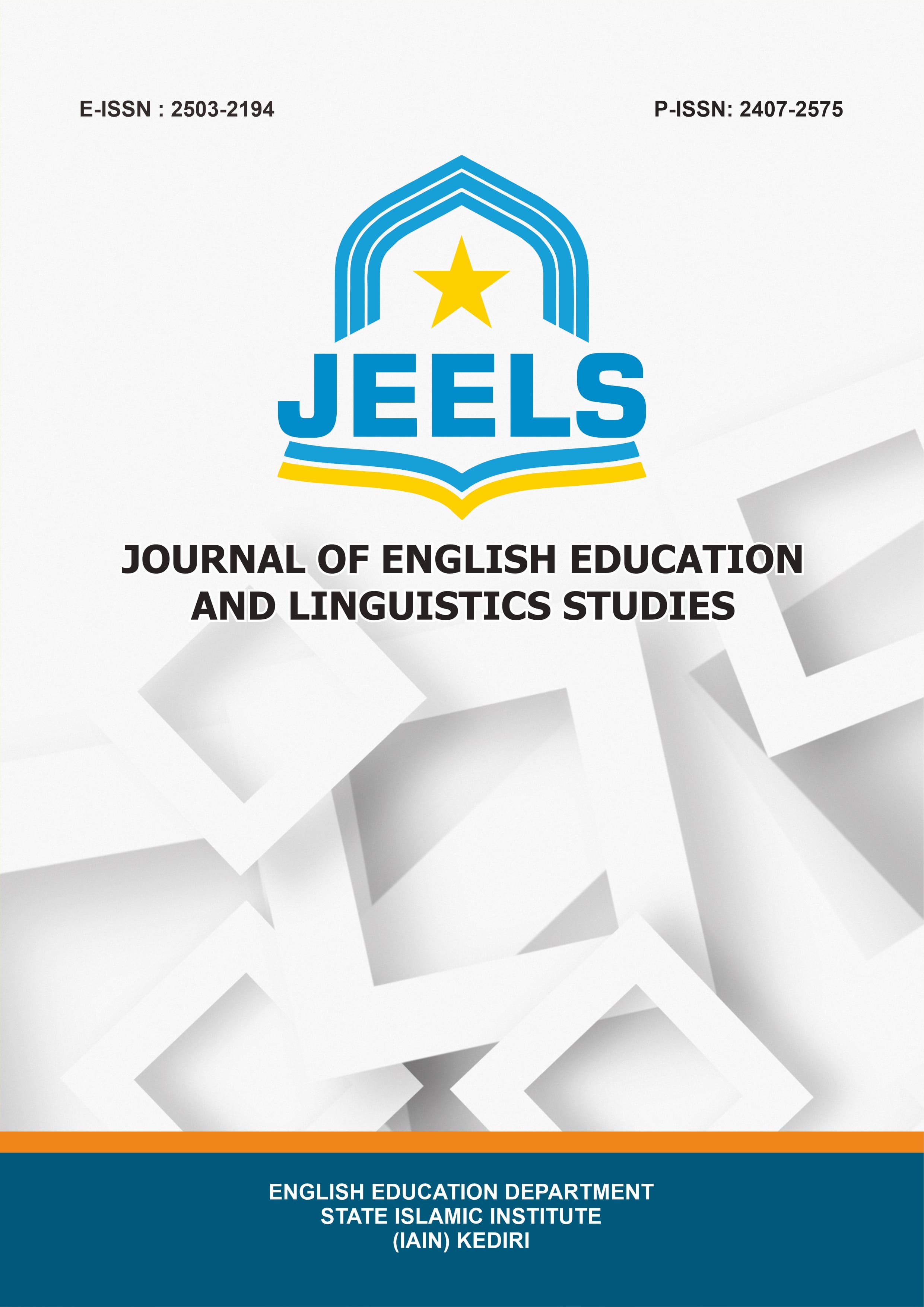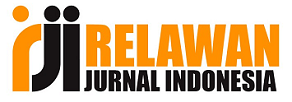A Literature Review on the Use of Discord Application in Education: Contributions and the Developments
DOI:
https://doi.org/10.30762/jeels.v11i2.2530Keywords:
Discord Application; Discord Learning Application; Contributions of Discord; Developments of DiscordAbstract
This research intends to conduct a systematic literature review on the use of Discord application in education. The use of technology, such as learning applications in education today is increasing day by day. One such application used by educators is Discord. While some literature reviews have touched on the topic, there is still much to be explored regarding its use in education. Therefore, this study synthesized the findings on two key aspects, namely contributions and developments on Discord by searching empirical research in databases such as Mendeley.com, Connected Papers, and Google Scholar. To deeply explore the research article, the researchers utilized the SLR procedure by Petticrew and Roberts (2006), and to guide the reviews, the researchers used PRISMA 2020 by Page et al. (2021). The research findings revealed that many studies explored students' perceptions of Discord's contributions to the class. While most reported positive perceptions, some revealed negative perceptions due to the application's poor network connection. Furthermore, most of the developments were applied in flipped-based classrooms to test out the created learning system. In conclusion, the researchers found that Discord has made numerous educational contributions and created a new virtual environment.
Downloads
References
Agung, A. S., Surtikanti, M. W., & Quinones, C. A. (2020). Students’ perception of online learning during COVID-19 pandemic: A case study on the English students of STKIP Pamane Talino. Jurnal Sosial dan Humaniora [Journal of Social Sciences and Humanities], 10(2), 225-235.
http://dx.doi.org/10.31940/soshum.v10i2.1316
Ananda, R., Mawardi, & Suryani, O. (2023). Development of flipped guided inquiry learning (FGIL) system using Discord application on chemical equilibrium. Jurnal Paedagogy: Jurnal Penelitian dan Pengembangan Pendidikan, 10(3), 746-758.
https://doi.org/10.33394/jp.v10i3.8105
Andriansyah, B., & Erlangga, D. T. (2023). How Discord application influences gamers to learning English. Jurnal Pustaka Ilmu, 3(1), 1-12. Retrieved from:
http://pustakailmu.id/index.php/pustakailmu/article/view/309
Ardiyansah, T. Y., Batubara, R. W., & Auliya, P. K. (2021). Using Discord to facilitate students in teaching learning process during COVID-19 outbreak. Journal of English Teaching, Literature, and Applied Linguistics, 5(1), 76-78. http://dx.doi.org/10.30587/jetlal.v4i1
Arifianto, M. L., & Izzudin, I. F. (2021). Students’ acceptance of Discord as an alternative online learning media. iJET, 16(20), 179-195. https://doi.org/10.3991/ijet.v16i20.22917
Ayob, M. A., Hadi, N. A., Pahroraji, M. E., Ismail, B., & Saaid, M. N. (2022). Promoting ‘Discord’ as a platform for learning engagement during Covid-19 pandemic. Asian Journal of University Education (AJUE), 18(3), 663-673. https://doi.org/10.24191/ajue.v18i3.18953
Beurin, L. C. (2022). STEM students’ conceptions of online learning during COVID-19 pandemic: A phenomenographic study. Journal of Pedagogical Research, 6(4), 143-167.
https://doi.org/10.33902/JPR.202217716
Bordel, B., Alcaria, R., & Robles, T. (2023). Assessing the impact of communication instructional tools and strategies on the students’ learning in the context of blended and online methodologies. International Journal of Engineering Education, 39(4), 1012–1034.
Chuang, T., & Ratan, R. (2022). Discord use and intent. Journal of Students Research, 11(3), 1-8. https://doi.org/10.47611/jsrhs.v11i3.3795
Craig, C. D., & Kay, R. (2022). Examining the Discord application in higher education: A systematic review of the literature. Journal of Digital Life and Learning, 2(2), 52-66.
https://doi.org/10.51357/jdll.v2i2.205
Delfianza, E., Mawardi, & Suryani, O. (2023). Development of flipped classroom based guided inquiry learning system with digital literacy using Discord application on thermochemistry. Jurnal Penelitian Pendidikan IPA, 9(7), 5228-5235.
https://doi.org/10.29303/jppipa.v9i7.4245
Handri, S., Mawardi , M., Aini, S., & Nizar, U. K. (2023). Learning system with digital literacy based on guided inquiry integrated flipped classroom using Discord application on colloid. Jurnal Penelitian Pendidikan IPA, 9(8) 6012-6019.
https://doi.org/10.29303/jppipa.v9i8.4471
Jannah, E. I., & Hentasmaka, D. (2021). The used of Discord application in virtual English learning: An investigation on students' perceptions. Premise: Journal of English Education and Applied Linguistics, 10(2), 183-200. http://dx.doi.org/10.24127/pj.v10i2.4168
Joyce, R., Sahawneh, F., & Dixon, B. (2022). Developing a cybersecurity educational community using Discord during the COVID-19 pandemic. The Journal of the Southern Association for Information System, 9(2), 48-59. https://doi.org/doi:10.17705/3JSIS.00026
Kruglyk, V., Bukreiev, D., Chornyi, P., Kupchak, E., & Sender, A. (2020). Discord platform as an online learning environment for emergencies. Ukrainian Journal of Educational Studies and Information Technology, 8(2), 13-28. https://doi.org/10.32919/uesit.2020.02.02
Marco, L. D. (2021). User-centered evaluation of Discord in midwifery education during the COVID-19 pandemic: Analysis of the adaptation of the tool to student needs. European Journal of Midwifer, 5, 1-6. https://doi.org/10.18332/ejm/142638
Mirnawati, Lisnawati, & Khair. (2022). Digitization of services to Kutaraja polytechnic students in increasing student satisfaction with the application-based first in-first out (FIFO) Method. Jurnal Ekonomi, 11(2), 1397–1403. Retrieved from:
http://ejournal.seaninstitute.or.id/index.php/Ekonomi
Mashud, Warni, H., Arifin, S., Ferry, M., Pebriyandi, & Kristiyandaru, A. (2021). The Application of Discord as an Effort to Increase Students’ Wellbeing in Physical Education Learning During the COVID-19 Emergency. Journal Sport Area, Vol. 6. No. 3, 335-348. https://doi.org/10.25299/sportarea.2021.vol6(3).6612
Mahdzir, M., Yahya, N., F., A., M., Mastan, Z., P., Yuet, L., M, & Ya’cob, N. (2023). Challenges in Discord application among quantity surveying students. INTI JOURNAL, 2023(12), 1–8. Retrieved from: http://eprints.intimal.edu.my/1751/
Odinokaya, M. A., Krylova, E. A., Rubtsova, A. V., & Almazova, N. I. (2021). Using the Discord application to facilitate EFL vocabulary acquisition. Education Sciences, 11(470), 1-12.
https://doi.org/10.3390/educsci11090470
Page, M. J., Moher, D., Bossuyt, P. M., Boutron, I., Hoffmann, T. C., Mulrow, C. D., et al. (2021). PRISMA 2020 explanation and elaboration: Updated guidance and exemplars for reporting systematic reviews. BMJ, 372(n71), 1-36.
https://doi.org/10.1136/bmj.n71
Petticrew, M., & Roberts, H. (2006). Systematic reviews in the social sciences: A practical guide, 1st ed. Oxford: Blackwell Publishing Ltd. Retrieved from: https://books.google.co.id/books/about/Systematic_Reviews_in_the_Social_Science.html?id=ZwZ1_xU3E80C&redir_esc=y
Ramadhan, A., & Albaekani, A. K. (2021). Student's response toward utilizing Discord application as an online learning media in learning speaking at senior high school. ISLLAC : Journal of Intensive Studies on Language, Literature, Art, and Culture, 5(1), 42-47. http://dx.doi.org/10.17977/um006v5i12021p42-47
Salehudin, M., Zurqoni, Z., Robingatin , R., Syobah, S. N., Janah, F., Rorimpandey, H. W., et al. (2023). Mobile learning with Discord application as creative teaching. TEM Journal, 12(3), 1697-1705. https://doi.org/10.18421/TEM123-51
Sartika, D., Sudana, D., & Gustine, G. G. (2022). EFL students’ experience in speaking practice on Discord application. Jurnal Pendidikan Bahasa Dan Sastra, 22(1), 25-36.
https://doi.org/10.17509/bs_jpbsp.v22i1.47651
Setyanto, A., Efrizal, E., & Nugroho, Y. P. (2023). Students’ perspective of acceptable online learning platforms for Japanese language skills courses. Al-Ishlah: Jurnal Pendidikan, 15(3), 2974-2984.
https://doi.org/10.35445/alishlah.v15i3.3097
Tuti, P. A., Mawardi, M., & Suryani, O. (2023). Flipped classroom system based on guided inquiry learning model using Discord application on reaction rate. Prisma Sains: Jurnal Pengkajian Ilmu dan Pembelajaran Matematika dan IPA IKIP Mataram, 11(3), 678-690. https://doi.org/10.33394/j-ps.v11i3.8131
Wahyuningsih, E., & Baidi. (2021). Scrutinizing the potential use of Discord application as a digital platform amidst emergency remote learning. Journal of Educational Management and Instruction, 1(1) , 9-18. https://doi.org/10.22515/jemin.v1i1.3448
Wiles, A. M., & Simmons, S. L. (2022). Establishment of an enganged and active learning community in the Biology classroom and lab with Discord. JMBE: Journal of Microbiology & Biology Education, 23(1), 1-3. https://doi.org/10.1128/jmbe.00334-21
Wulanjani, A. N. (2018). Discord application: Turning a voice chat application for gamers into a virtual listening class. 2nd English Language and Literature International Conference (ELLiC), 2. ELLiC Proceedings. 115-119. Retrieved from: https://jurnal.unimus.ac.id/index.php/ELLIC/article/view/3500
Zannah, N. A., Zakiyyah, & Fatnah, N. (2022). Examining the use of Discord applications in improving Science learning outcomes of grade 7 students. International Journal of Education and Humanities (IJEH), 2(2), 61-69. Retrieved from:
Downloads
Published
How to Cite
Issue
Section
License
Copyright (c) 2024 JEELS (Journal of English Education and Linguistics Studies)

This work is licensed under a Creative Commons Attribution 4.0 International License.










